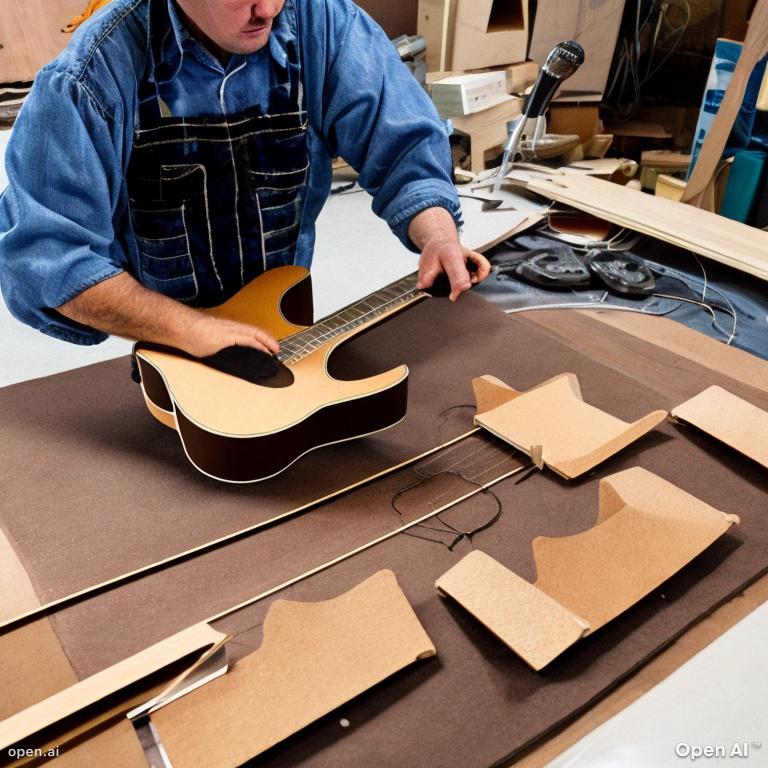As an Amazon Associate I earn from qualifying purchases.
Who Invented the Guitar?
The invention of the guitar is an intriguing tale that dates back centuries. While it’s challenging to pinpoint a single person responsible for its creation, the guitar’s evolution can be traced through various cultures and time periods. Let’s embark on a historical journey to explore the origins and development of this beloved instrument.
- Ancient Origins:
- Ancient Stringed Instruments: The guitar’s ancestry can be traced back to ancient civilizations, such as the Mesopotamians, Egyptians, and Greeks, who played various stringed instruments.
- Instruments with Similarities: Instruments like the lyre, lute, and tanbur share similarities with the modern guitar, featuring a resonating body and strings.
- Moorish Influence:
- Arab Oud: During the 8th century, the Moors introduced the Arab oud to Spain. The oud had a rounded back, a similar shape to the modern guitar.
- Oud’s Evolution: The Arab oud underwent modifications and adaptations in Spain, leading to the development of instruments like the “guitarra morisca” and the “vihuela.”
- Birth of the Guitar:
- Vihuela: In the 15th century, the vihuela emerged as a popular instrument in Spain. It had a guitar-like shape and featured a rounded back.
- Four-Course Guitar: The vihuela eventually evolved into a four-course guitar, which had double strings on each course. This marked a significant step toward the modern six-string guitar.
- Renaissance and Baroque Eras:
- Guitarra Latina and Guitarra Española: In the Renaissance era, two distinct types of guitars emerged. The guitarra latina had a shape similar to the modern guitar, while the guitarra española had a shape more akin to the vihuela.
- Baroque Guitar: During the Baroque period, the guitar underwent further developments, including the addition of a fifth course and changes in string materials and tuning.
- Antonio de Torres:
- Torres’ Innovations: In the 19th century, Spanish luthier Antonio de Torres revolutionized guitar construction. He introduced several design enhancements, such as a larger body, a fan-bracing system, and improvements to the soundboard and neck.
- Influence on Modern Guitar: Torres’ innovations laid the foundation for the modern classical guitar, which is still widely used today.
- Electric Guitar Revolution:
- Rickenbacker and Gibson: The invention of the electric guitar can be attributed to various individuals, but Adolph Rickenbacker and the team at Gibson Guitar Corporation played pivotal roles in its development during the early 20th century.
- Innovations and Popularization: Innovations like magnetic pickups, solid-body construction, and amplification systems transformed the guitar into a versatile instrument that shaped popular music genres.
Resources for Further Information:
For more in-depth information about the history of the guitar, you can explore the following resources:
- “The Guitar: The History, The Music, The Players” by David Burrluck.
- “Guitars: Music, History, Construction, and Players from the Renaissance to Rock” by Tom and Mary Anne Evans.
- The Metropolitan Museum of Art’s Musical Instruments Collection: https://www.metmuseum.org/art/collection/search#!?q=guitar
So, while we can’t credit a single individual for inventing the guitar, its journey through time and cultures has shaped it into the beloved instrument we know and cherish today. From ancient origins to modern innovations, the guitar has evolved and left an indelible mark on music history.
Amazon and the Amazon logo are trademarks of Amazon.com, Inc, or its affiliates.

